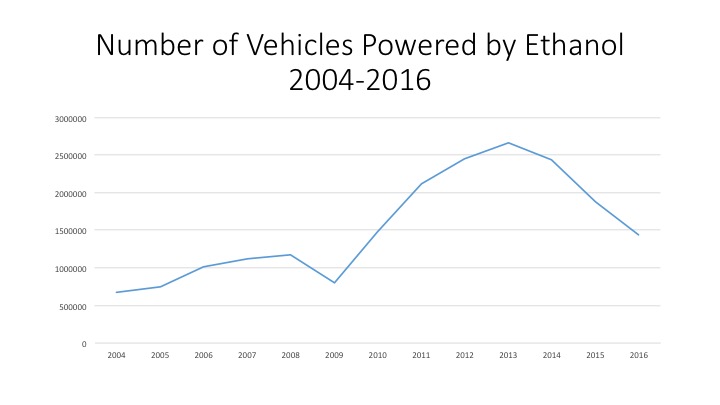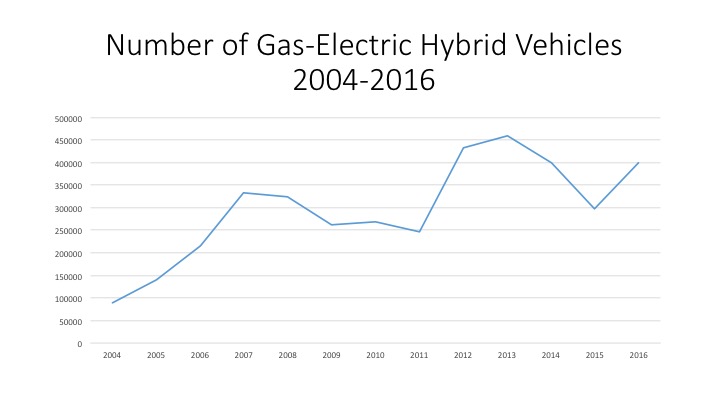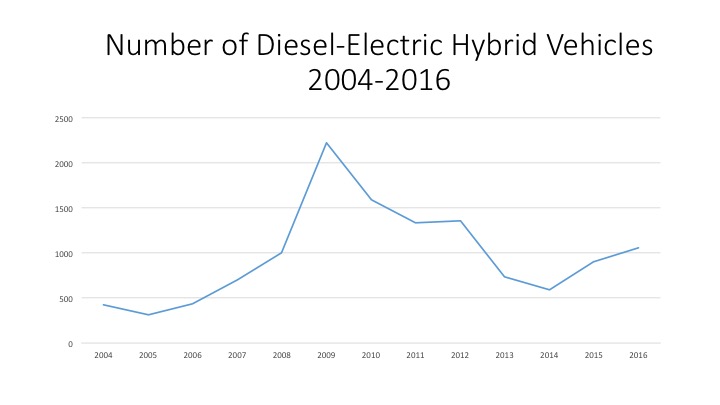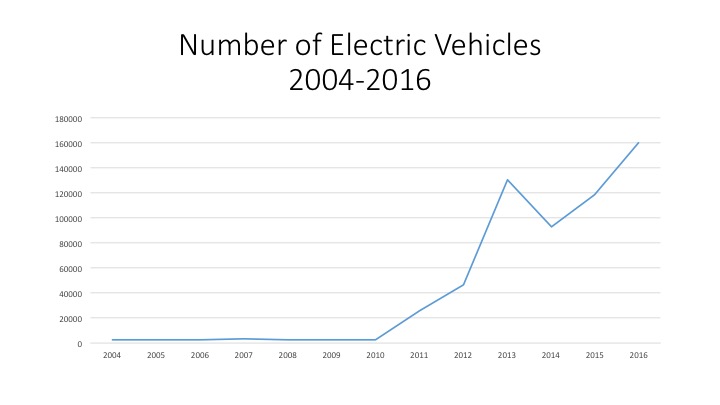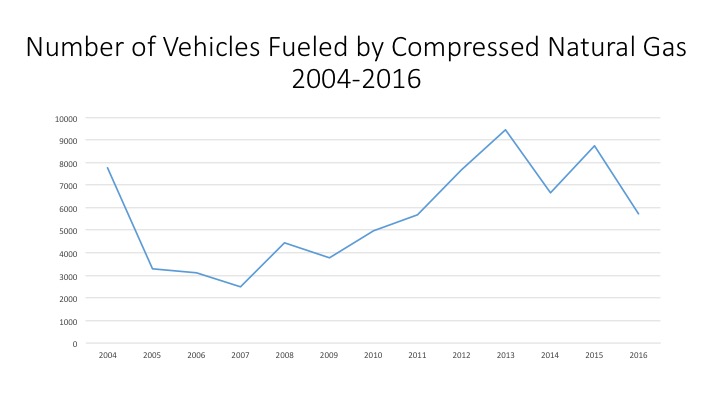With alternative energy sources slowly growing more popular for consumption, there are also certain sources that remain popular to fuel vehicles. The U.S. Energy Information Administration provides data on the number of vehicles that are powered by alternative energy sources. Ethanol is by far the most commonly used alternative fuel source used to power vehicles, followed by electric hybrid vehicles. While the use of some of these alternative fuel sources is growing, most of the fuel sources have experienced a decrease in use in recent years.
Of the alternative fuels sources the U.S. Energy Information Administration provides information on, ethanol was the most highly used fuel source. Ethanol is a renewable fuel made from corn and other plant materials.
In 2004 there were 674,678 vehicles that used ethanol as a fuel source. By 2013 that number reached its peak at more than 2.6 million vehicles using ethanol as a fuel source. While the number of vehicles using ethanol as a fuel source has declined in recent years ( in 2016 about 1.4 million vehicles used it as a fuel source), it still remains the most utilized renewable fuel source for vehicles.
The number of gas-electric hybrid vehicles produced on an annual basis has been increasing since 2004. In 2004 there were 88,272 gas-electric hybrid vehicles and in 2016 that number was 399,367. It was in 2013 when there was the most number of gas-electric hybrid vehicles, that number was 458,994.
The use of diesel-electric hybrid vehicles has not been as popular and has not grown as much as gas-hybrid vehicle. In 2004 there were 419 diesel-electric hybrid vehicles and by 2016 that number had only grown to 1,053. The number of diesel-electric hybrid vehicles peaked in 2009 at 2,223.
The use of electric vehicles didn’t really take off until 2013 when there was an inventory of 130,323. Between 2004 and 2010 though there were no more than 3,200 electric vehicles each of those years. It was in 2011 when the use of electric vehicles began to take off, and by 2016 there were 160,191 electric vehicles.
While compressed natural gas is widely available, its utilization as a fuel source falls below many of the other renewable fuel sources available to vehicles. In 2016 there were 5,730 vehicles fueled by compressed natural gas, a number that is below how many there were in 2004 (7,752). It was in 2013 when there was the most amount of vehicles fueled by compressed natural gas, that number was 9,454.
